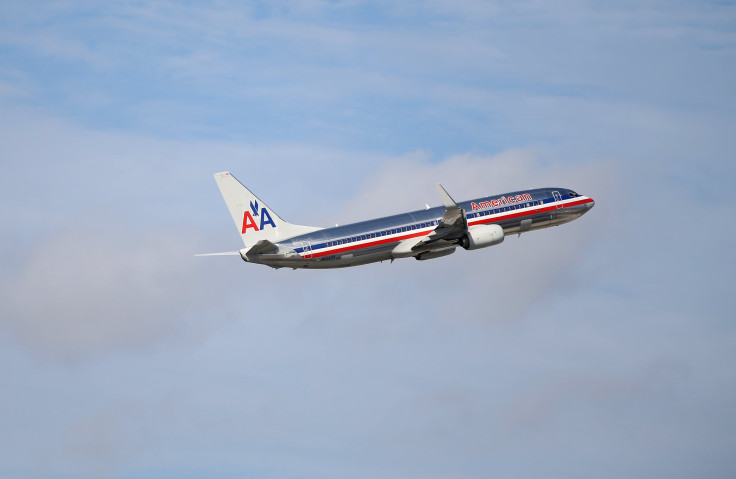Did The Justice Department Do Enough To Protect American Airline Consumers?

It’s a good time to be in the American airline industry. Planes are full, fuel is cheap and profits are finally soaring. According to Bank of America Merrill Lynch analyst Glenn Engel, North American airline earnings will jump 73 percent from $11 billion in 2014 to $19 billion in 2015, thanks in large part to fuel savings.
Of course, the American consumer isn’t exactly feeling the effects of the industry’s good fortune: Airfare prices are expected to rise next year, economy seats seem to be shrinking and fees are climbing.
The American Express Global Business Travel Forecast predicts domestic short-haul economy fares will grow between 2 percent and 5 percent, while long-haul economy fares will increase between 1 percent and 3 percent. And an AP analysis found that the average domestic airline ticket during the 12-month period ending in September rose 3.5 percent to $372.21.
It’s no coincidence, say some industry watchers, that this is happening during a time when there are three big legacy carriers left standing: American, Delta and United, which, along with Southwest, control more than 80 percent of passenger airline traffic in the United States.
“The protections these carriers now enjoy from real competition is allowing them to behave like oligopolists,” said Chris Sagers, a professor at the Cleveland-Marshall College of Law. “So you can expect prices to continue to stay high, the continuing deterioration of customer service, and flights to stay packed. It’s very tough to get a convenient flight that isn’t expensive. This is all the highly predictable outcome of an anti-competitive market.”
George Hoffer, a transportation economist at the University of Richmond, agrees. “It’s a textbook example of what you would have expected with these mergers,” he said.
Sagers testified in Congress last year about the harm consumers would face if American Airlines were allowed to merge with US Airways, resulting in the world’s biggest airline. Soon after, in August, the Department of Justice filed an antitrust lawsuit challenging the merger. That complaint, said Sagers, was impeccably presented -- and, in essence, a complete reversal of the position the DOJ had previously taken when it failed to challenge a number of large airline mergers since 2005, including Northwest with Delta and Continental with United.
“Increasing consolidation among large airlines has hurt passengers,” read the complaint. “The major airlines have copied each other in raising fares, imposing new fees on travelers, reducing or eliminating service on a number of city pairs, and downgrading amenties.”
Then, in a move that was baffling to some, the Justice Department settled the suit with American Airlines in exchange for American and US Airways giving up slots at the country’s busiest airports, to make way for other competitors. Many were perplexed by the DOJ’s turnaround. Scott Hemphill, an antitrust professor at Columbia Law School, told the New York Times, “The way the complaint was structured suggested the government would see this to the end and block the merger.”
Hoffer believes the DOJ failed to protect the public not from the final merger of American Airlines and US Airways, but from the Delta-Northwest merger in 2008. “Once we let Delta pick up Northwest, the dominoes had to fall,” he said. “If Northwest and Continental were too small to generate all the economies of scale that, say, Delta, American and United had, the public policy should have been to let the smaller two merge.”
Airline industry advocates often point to a January PwC study that used U.S. Department of Transportation data to show that overall U.S. domestic fares had risen only 2 percent since 2004, concluding that airline mergers actually help keep fares low. But Northeastern University economist John Kwoka says that most careful economic studies of mergers examine pricing on affected routes before and after the merger.
“If you look at all routes, there are tens of thousands of them, and there may be no hugely measurable effects,” he said. “Major mergers are usually responsible for price increases around 8 or 9 percent.” Indeed, the PwC study found that in some markets, prices rose as much as 19 percent, despite the presence of low-cost carriers.
Christopher Elliott, a consumer travel advocate, says consumers will continue to face increasing fares and poor service, thanks to the harm mergers have caused consumers. “Now the chickens have come home to roost,” he said. “They’ve cut flights, cut capacity, left entire hubs that are now just ghost towns. How much longer will we have three big airlines? The next merger, we’re down to two.”
But, he added, consumers would probably be willing to overlook higher fares if the airlines “just treated people well, and gave them a quality product at a fair price. No one is complaining about other industries that are making money. If the flying experience was civil, people would be satisfied.”
The airlines, however, argue that they are doing just that -- by reinvesting their profits into improving the customer experience with new airplanes, upgraded facilities and Wi-Fi additions. “When the price of coffee beans falls, you don’t expect your latte to cost you less,” Jean Medina, a spokeswoman for trade group Airlines for America, told NBC News.”You expect Starbucks to reinvest in its product and that’s what the airlines are doing.”
Because airlines buy much of their fuel on the futures market, they are just starting to feel the effects of lower prices. “They hedge themselves six months out,” said Hoffer. “Just right now they’re beginning to get off the peak-priced fuel that they hedged last spring.”
That means even brighter skies are ahead -- for the industry, at least.
© Copyright IBTimes 2024. All rights reserved.




















